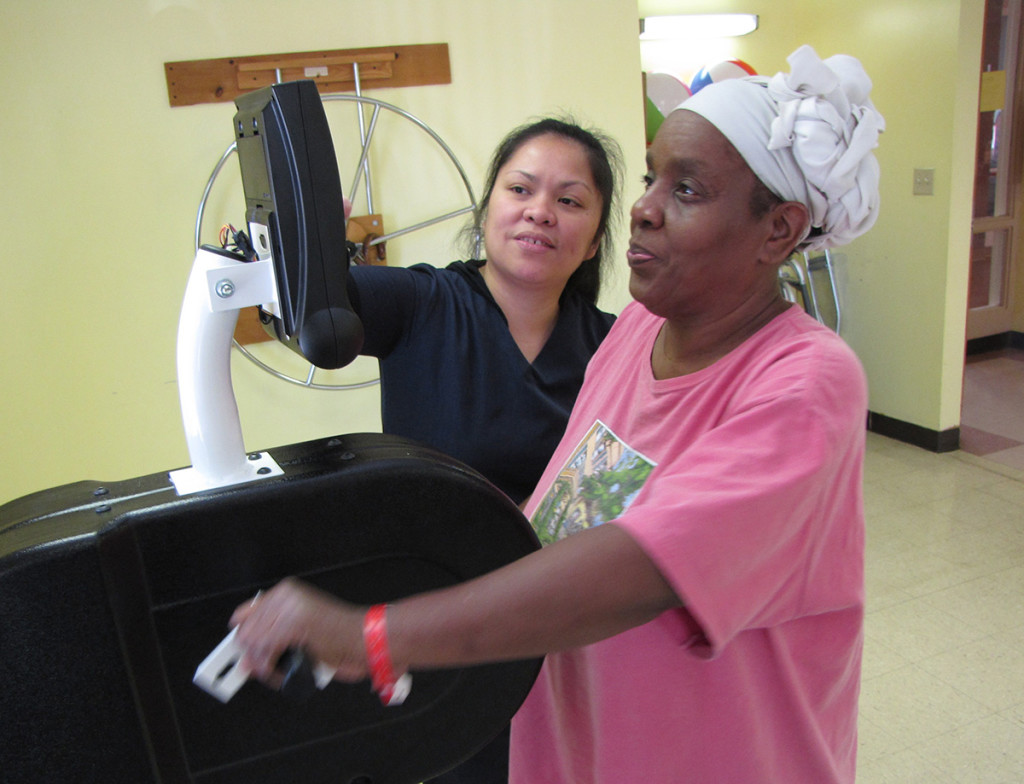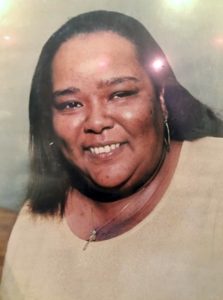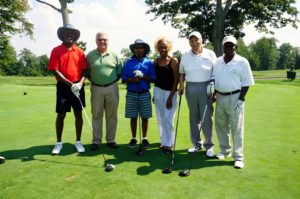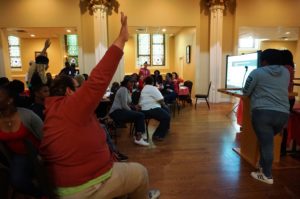
If you have a one-hour appointment scheduled with Janneth Gallosa, you will find that she makes every minute count towards your body’s healing.
As an occupational therapist, Gallosa works with residents of New Community Extended Care Facility to help improve their functional abilities in order to live independently. Residents can receive occupational therapy (OT) after undergoing surgery, suffering an incident such as a stroke, or are otherwise in need of regaining coordination, strength and mobility. Gallosa is employed by Activa, a service provider for Extended Care, and has been based on the first floor of NCC’s nursing home for three years.
“She’s a really good occupational therapist,” said Robert Smolin, Administrator of the 180-bed capacity skilled nursing facility in Newark. Gallosa strikes the right balance between being both gentle but firm, he said.
Gallosa plays the role of both a healer and teacher. Whether she’s starting you off with small movements on the finger ladder to improve coordination or having you increase your range of motion on the shoulder wheel, Gallosa’s philosophy is to help residents grasp why an exercise is beneficial.
“I try to explain to them the purpose and remind them of their goal,” said Gallosa, whose clients range in age from 40 to 90.
Of course, she also gets down to brass tacks during each session, which can last anywhere from 30 to 75 minutes. Her approach to OT involves task segmentation, or breaking up a movement into smaller components and relearning each part until a difficult task becomes more fluid.
Take for instance Gallosa’s client, 61-year-old Elizabeth Rigsby. Rigsby credits Gallosa with helping her relearn how to walk after undergoing extensive surgery for multiple hernias and twisted bowels.
“The pain got so bad I could hardly walk,” said Rigsby, who was admitted to University Hospital in December of 2014. “I had to be retrained all over again,” she said. Gallosa worked with Rigsby, who started off in a wheelchair, then progressed to a walker and a cane.
“As she sees you can take more, she gives you more,” Rigsby said while sitting in the Extended Care library on February 13, less than two months post-surgery, able to walk with a cane. “Now I understand what a baby feels when he’s taking his first steps,” she added.
Gallosa also understands that after an intense session, her clients are bound to feel some soreness or discomfort the next day.
Rigsby recalled Gallosa checking on her after one such appointment, gently asking her, “How was your night?”
“It was like she knew, even though I didn’t want to say,” Rigsby recalled.




